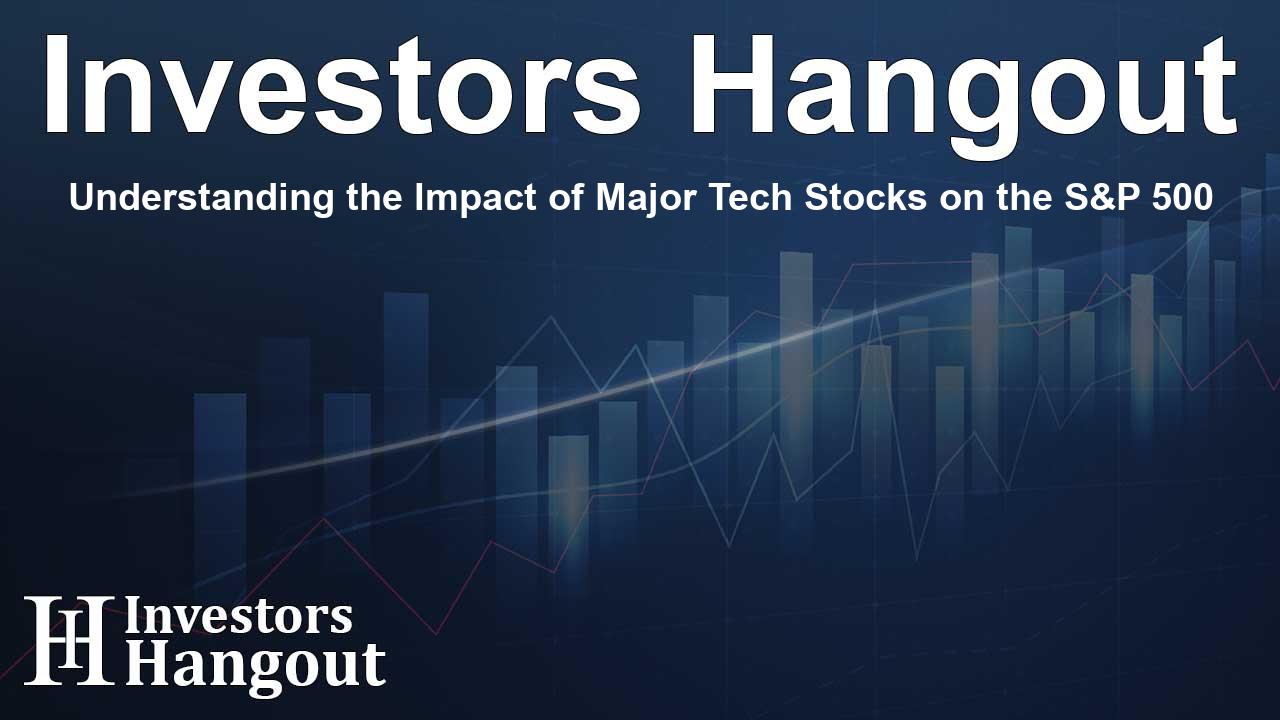Understanding the Impact of Major Tech Stocks on the S&P 500

Investing in Index Funds: A Closer Look at S&P 500
Investors favor index funds due to their simplicity and potential for diversification. These funds typically have lower expenses, making them attractive compared to actively managed options. In many cases, broad index funds can outperform actively managed funds over the long term because of high management costs and the inherent difficulty in consistently identifying better-performing indexes.
As of late, the S&P 500 has posted impressive returns, achieving a 36.4% increase over the past year. However, this leads us to two key concerns for investors looking into index funds.
Valuation Concerns
The first concern centers around valuation. The S&P 500 is currently trading at a forward price-to-earnings ratio of 21.6, which has risen from 18 a year prior. This figure not only surpasses the historical average but also raises questions about sustainability in the midst of ongoing market volatility.
Concentration of Holdings
The second issue is the concentration of holdings within the S&P 500 index. Being market capitalization-weighted, the S&P 500 relies heavily on a few tech giants. For instance, as of the latest reports, three leading companies—Apple Inc., Microsoft Corp., and Nvidia Corp.—account for a substantial 20% of the SPDR S&P 500 ETF Trust (SPY), with their combined holdings comprising 26% of the ETF's total portfolio.
Understanding the Top Holdings
Despite their significant contributions to the index's performance, this heavy reliance on a small number of stocks poses risks. If these top companies falter, the entire index could suffer. The performance of the SPY highlights this: while it boasts over $591 billion in assets, its returns are tied to the fortunes of just a few firms.
Equal Weight and Other ETF Strategies
A viable alternative to managing this risk is offered by the Invesco S&P 500 Equal Weight ETF (RSP). This fund utilizes an equal-weighting strategy, rather than focusing exclusively on market cap—a move that can reduce the impact of top-performing stocks.
Differentiated Performance
The RSP has demonstrated lower volatility compared to its cap-weighted counterparts. In 2022, when SPY faced an 18.2% decline, the RSP only fell by 11.6%. On the other hand, the RSP showed a commendable 13.7% rise in 2023, as SPY surged ahead with a 26.2% return.
Factor-Based Strategies for Diversification
Invesco provides various factor-based strategies which allow investors to select stocks based on specific criteria such as quality, momentum, and value, potentially improving performance over traditional approaches. By focusing on these specific investment qualities, investors can further diversify their portfolios.
Assessing Long-Term Performance
Looking at performance comparisons of these funds reveals insightful information for stakeholders. The Vanguard S&P 500 ETF (VOO), which has a lower expense ratio than SPY, generally outperformed SPY over a ten-year span. However, the Invesco S&P 500 Quality ETF (SPHQ) has recently emerged as a top performer, exhibiting superior returns across the board.
Conclusion on Strategic Investment Practices
Understanding these dynamics can significantly influence smarter investment choices. Strategies that incorporate a blend of market cap and equal weightings, alongside factor-based selections, may better position investors toward achieving sustainable growth.
Frequently Asked Questions
What is the S&P 500 index?
The S&P 500 is a stock market index that measures the performance of 500 large companies listed on stock exchanges in the United States.
Why are index funds popular?
Index funds are popular due to their low expenses, broad diversification, and the ease of management compared to actively managed funds.
What are the risks of cap-weighted index funds?
Cap-weighted index funds can lead to over-exposure in a few high-performing stocks, increasing volatility and risk if those stocks underperform.
How does the Invesco S&P 500 Equal Weight ETF (RSP) work?
The RSP invests equally in all S&P 500 companies, reducing the concentration risk associated with cap-weighted funds, leading to more stable returns.
What is the significance of expense ratios in ETFs?
The expense ratio indicates the annual fees that investors pay; lower ratios typically correlate with better long-term performance due to reduced costs.
About The Author
Contact Hannah Lewis privately here. Or send an email with ATTN: Hannah Lewis as the subject to contact@investorshangout.com.
About Investors Hangout
Investors Hangout is a leading online stock forum for financial discussion and learning, offering a wide range of free tools and resources. It draws in traders of all levels, who exchange market knowledge, investigate trading tactics, and keep an eye on industry developments in real time. Featuring financial articles, stock message boards, quotes, charts, company profiles, and live news updates. Through cooperative learning and a wealth of informational resources, it helps users from novices creating their first portfolios to experts honing their techniques. Join Investors Hangout today: https://investorshangout.com/
The content of this article is based on factual, publicly available information and does not represent legal, financial, or investment advice. Investors Hangout does not offer financial advice, and the author is not a licensed financial advisor. Consult a qualified advisor before making any financial or investment decisions based on this article. This article should not be considered advice to purchase, sell, or hold any securities or other investments. If any of the material provided here is inaccurate, please contact us for corrections.
